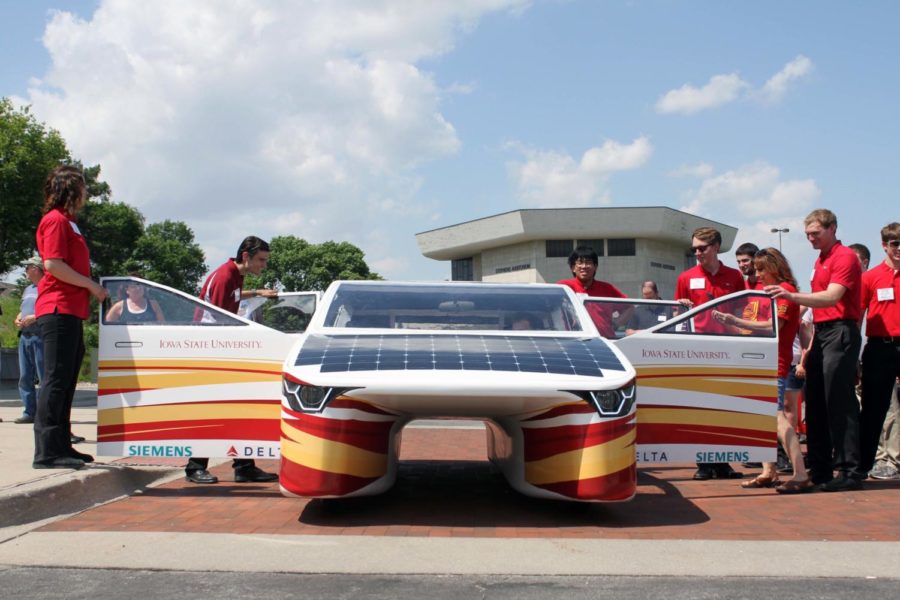PrISUm sets sights on new solar car technology
September 13, 2017
While solar car technology is being advanced every day, a team of students on campus is utilizing that same technology to change the world.
The Iowa State PrISUm Solar Car Team is a student organization dedicated to enabling students with the opportunity to further their education, work with other students and promote the expansion of renewable energy in the automotive field.
With three team leaders and sub-teams comprised of mechanical, electrical, systems and business, PrISUm has a two-year build cycle for their cars. This build cycle allows the team to research and develop for one year, and then build and test their car the following year.
Since the team’s inception in 1989, PrISUm has designed and built 14 solar powered cars that have competed in races spanning the U.S. and Canada. However, this October, the team will be traveling to Australia for the first time to compete in the Bridgestone World Solar Challenge.
Housed in the Advanced Machinery Systems Laboratory, the team of students who work on the solar car have pushed the envelope of what is possible in a solar car. Dubbed “Penumbra”, their current car is the nation’s first four-door solar electric car, said project director Dylan Neal.
“We’re going to change the paradigm of what everyone thinks,” Neal said, speaking about their upcoming competition in Australia. “No one else is doing what we’re doing right now. We’re hoping to change what the competition is, and what they [other teams] should be moving toward in their future designs.”
The design process for Penumbra began two years ago, said Ago LoBello, assistant project director for Penumbra.
“Each little sub-team makes a component that goes on the entire project,” said LoBello. “And that happens in the first year. From there, we have all these designs and then we say, ‘OK, how do we manufacture it, who do we talk to, who can help us refine these designs to make them more manufacturable.'”
The car is then built and tested by the students to ensure that everything works properly. If needed, they will redesign specific components to ensure safety and reliability.
“Our design philosophy is that we like to build everything from scratch,” said Jason Cheng, a member of the electrical team for Penumbra.
“Every part on the car was designed by Iowa State students, except for the maximum power point trackers. They track the power output at each cell and for a college student to design one would take the better part of three or four years, and our build cycle is only two years,” Cheng said.
Penumbra is also the world’s first solar utility vehicle, boasting not just four doors and four seats, but an infotainment system inside that matches and even outshines some systems in modern cars.
“One of the main electrical projects we tackled for P14 [Penumbra] was a full-scale infotainment system,” said Cheng. “It utilizes an 11-inch touch screen display and has a custom-built music player, full Bluetooth connectivity, Google Maps integration, GPS, 4G LTE and a wireless charger.
“We’re basically putting all the bells and whistles you’d see on a normal car into ours.”
The PrISUm team is open to all majors and students who are willing to learn and contribute with the team.
“It’s learning outside of what your major is,” said James Kuhman, a member of the electrical team. “It’s an experience you wouldn’t have even really thought possible for yourself. When you actually put yourself into that process, and take the time to work on projects, it feels very good.”
Penumbra is currently headed to Australia to compete in the Bridgestone World Solar Challenge, which runs Oct. 8 through Oct. 15. The car will be driven by the students from Darwin, Australia in the Northern Territory to the finish line in the city of Adelaide – over 3,000 kilometers or 1,864 miles.
















